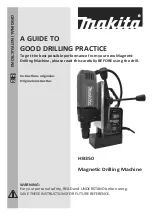
8
Important!
Before installation, remove shipping brackets from the grill. To
do so, loosen the 4 screws on the bottom sides of the grill which
hold the brackets to the grill. Slide the shipping brackets off and
retighten the screws.
LOCATION:
When determining a suitable location take into account concerns
such as exposure to wind, proximity to traffic paths and keeping
any gas or electrical supply lines as short as possible and away from heat sources. Locate the grill only in a well
ventilated area. Do not build the grill under overhead unprotected combustible construction. Never locate the
grill in a building, garage, breezeway, shed or other such enclosed areas. During heavy use, the grill will produce
a lot of heat and smoke. Ensure there is adequate area for it to dissipate.
If locating the grill in a windy area, try to locate the grill so the prevailing wind will blow air at the front of the
grill as shown in Fig. 02a. This will assist the grill in venting hot air thru the back of the grill. In addition, this
will help keep any smoke from blowing at someone who is cooking on the grill. If you have to locate the grill in
a windy area where the prevailing wind is at the rear of the grill, a windbreak must be installed. The windbreak
should be made such that it will block wind from entering the exhaust vent in the rear of the unit as shown in Fig.
02b. Location of the windbreak relative to rear of the grill must adhere to the clearances specified for combus-
tible or non-combustible construction as defined in these instructions. Refer to following pages.
As high-performance gas appliance, your grill requires significant amounts of air to support the combustion
process. Your grill is designed to take air in through the valve panel area, and send the exhaust products out
through the exhaust gap at the rear of the hood. Using your grill in windy conditions can disrupt the proper flow
of air though your grill, leading to reduced performance, or in certain severe cases, causing heat buildup in the
valve panel area. This can lead to problems such as having the knobs melt, or burn hazards when the valve panel
surfaces become too hot to touch.
During high wind conditions, it is best if you don’t use your grill. If you live in an area that is subject to frequent
high winds, or a steady directional wind, then the installation of a suitable windbreak may be advised. If you have
a grilling cart, it is best to position the unit so the prevailing wind blows into the valve panel, thus supporting the
proper airflow. Winds hitting the back of the grill directly are the most likely to cause problems, although wind
blowing along the exhaust gap in the rear can also be problematic.
Please note that damage to your grill resulting from use in windy conditions, such as melted knobs or igniter
wires, or valve panel discoloration from heat build-up, are excluded from warranty coverage.
INSTALLATION
LOCATING GRILL/BUILT-IN CLEARANCES
FIG. 01
Shipping Brackets
































